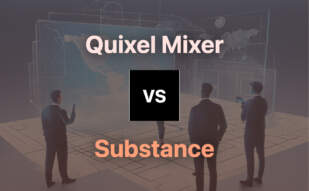Quixel Mixer is a user-friendly 3D texturing software designed for simplicity, flexibility, and high-quality results. It features unique tools such as Multi-channel 3D painting, real-time 3D curvature, and seamless texture projection. Although lacking a built-in baker, Quixel Mixer leverages external tools like Marmoset Toolbag for this purpose. It competes with Adobe’s Substance 3D Painter, offering a different approach by prioritizing photorealism over customizability. Quixel Mixer Alternatives include Substance Painter, Substance Designer, ArmorPaint, Blender, Unreal Engine, Unity, Sculptris, and Juicer.
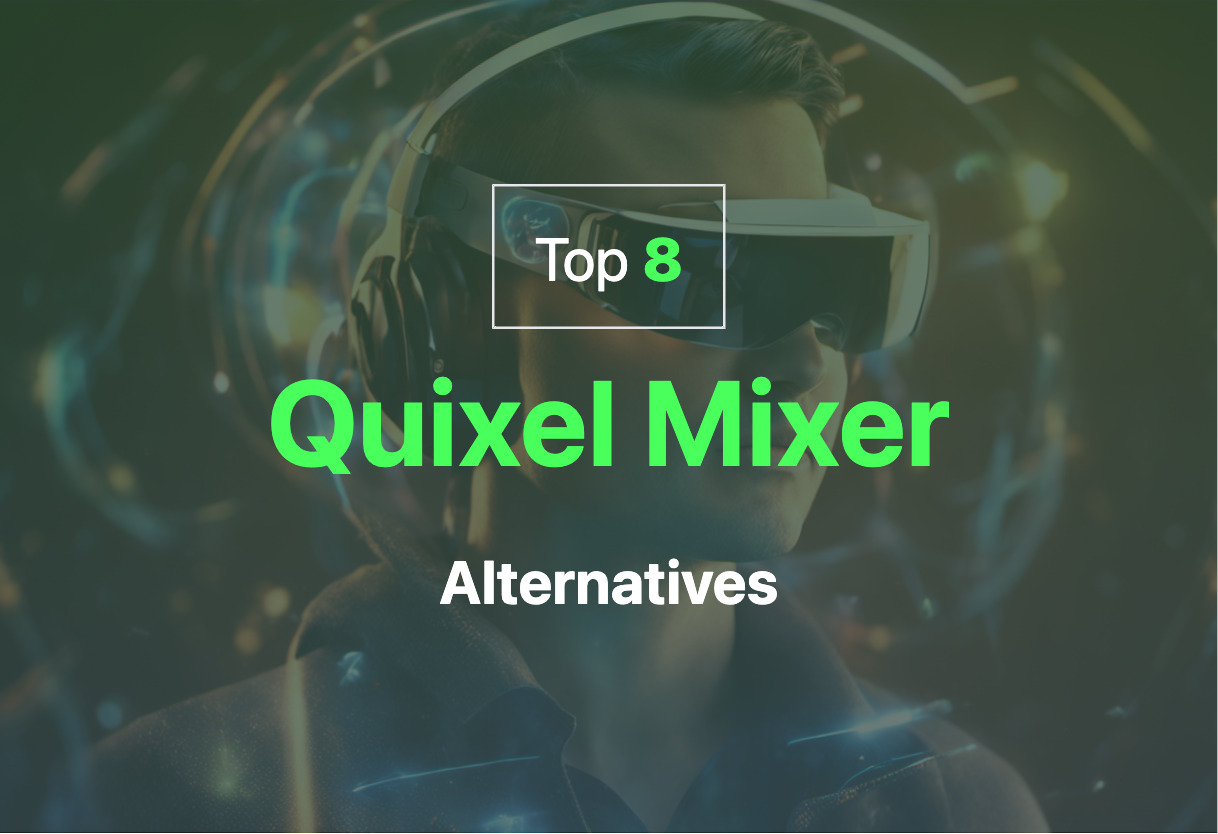
Substance Painter
A robust 3D painting tool by Allegorithmic, Substance Painter has earned its stripes in the gaming industry, noted for its advanced texturing capabilities. Its interface mirrors both 3D software packages and Adobe Photoshop, making it a go-to choice for texture work and 3D modelling.
Substance Painter Top Features
- Advanced procedural texturing tools for unparalleled textural detail.
- Enables painting on both 2D maps and 3D models in the viewport for precision work.
- Real-time PBR (Physically-Based Rendering) materials for realistic textures.
- Exports textures in PBR format compatible with popular game engines.
- Supports painting across UV tiles for maximized detail.
| Feature | Benefit |
|---|---|
| 8k texture baking | Ultra-high definition textures |
| Particle effects brushes | Realistic special effects |
| Training tutorials | Eases learning curve |
Substance Painter Limitations
- Requires a properly UV unwrapped polygonal model for painting.
- Higher cost for individual game developers.
- Advanced features need practice to master.
Substance Painter Pricing
While it’s considered more expensive than alternatives for individual developers, a beta license can be used to sell assets on the Steam Store. A possible bundle with Substance Designer could be around $700. Pricing is comparable with 3D-Coat and Mudbox.
Substance Painter Use Cases
Use case 1 – Gaming Industry
High profile games like Uncharted 4 and Horizon Zero Dawn have extensively made use of Substance Painter. It’s well adopted by gaming giants like Capcom and Activision, largely for its ability to quickly generate realistic textures and meshes. The workflow efficiency it brings to game development is noteworthy.
Use case 2 – Digital 3D Art
Substance Painter can significantly enhance digital three-dimensional artwork, thanks to its advanced features including particle effects brushes and 8K texture baking.
Use case 3 – Asset Selling on Steam Store
With a beta license, Substance Painter can be a useful tool for creating and selling high-quality assets on the Steam Store. This can provide an income stream for digital artists and developers using the platform.
Substance Designer
An integral part of Adobe’s Substance 3D Packages, Substance Designer is material-authoring software tailored for both AAA game developers and indie creators alike.
Substance Designer Top Features
- New set of Spline, Path tools for generating and manipulating 2D shapes
- ‘Portal’ functionality for hassle-free data transfer without wire connection
- Surface patterns creation, pattern scattering control
- Support for loops repetition with Substance Engine 9
- Quick access to tutorials, project settings from Home Screen
| Feature | Description |
|---|---|
| Spline Tool | |
| Path Tools | 10 nodes for generating paths from grayscale masks, converting to splines |
| Substance Engine 9 | Introduced for support for loops repetition within Substance Function Graphs |
Substance Designer Limitations
- Discontinued procedural geometry toolset
- Model graphs removed entirely
Substance Designer Pricing
Pricing for Substance Designer varies. A standalone license costs $149.99 via Steam. You can also opt for a subscription at $19.99 per month or $219.88 annually through Adobe’s Substance 3D subscriptions. For larger teams using Linux, a Creative Cloud Plan is required, costing $1,198.88/year. The packages come with free updates on Steam until the end of 2023.
Substance Designer Use Cases
Use Case 1 – Game Development
A crucial tool in gaming industry, Substance Designer is used in popular games like Deathloop and Assassin’s Creed Valhalla to create meshes/materials.
Use Case 2 – Material Creation
Substance Designer excels in creating tiling textures, providing textures compatible with any engine, thereby making it a universal solution in the industry.
Use Case 3 – Pairing with Substance Painter
For optimal professional use, Substance Designer is often combined with Substance Painter, where the former creates the materials and the latter applies textures and layers to these materials.
ArmorPaint
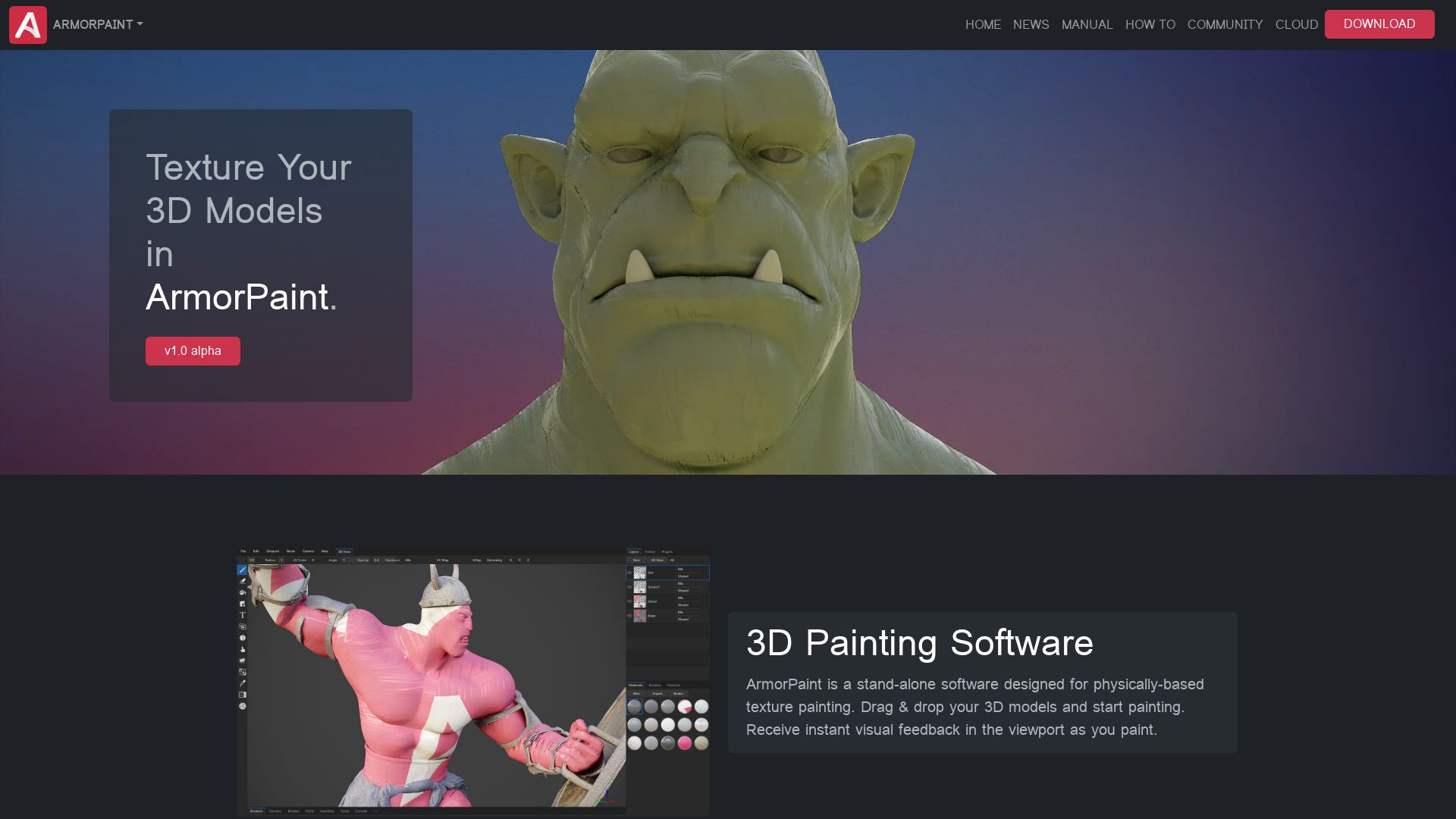
Meet ArmorPaint, an open-source 3D painting tool providing game-ready PBR texture maps and touted as Adobe Substance Painter’s potential rival. Thanks to its GPU-accelerated engine, you can enjoy seamless 16K texture painting – provided your hardware keeps up!
ArmorPaint Top Features
- Hardware-accelerated baking done at lightning speed on Nvidia RTX graphics cards.
- An innovative plugin system that paves the way for bold customization.
- Unlike the impatient dragon Smaug, ArmorPaint loves all types of import, 3D assets formats like OBJ, FBX, STL, or texture maps in 2D formats.
- A robust GPU engine for seamless 16K texture painting to add that level of detail to your work that turns heads – and computer cooling fans.
| Availability | Free source code, or below $20 for compiled binaries! |
| Live Plugin Link | Seamlessly operate with Unreal Engine or Unity. |
| Privacy | Puts data collection on a strict diet, aka zero data harvesting. |
ArmorPaint Disadvantages
- Touch controls could use a friendly chat about usability.
- The user interface, at times, can resemble a labyrinth – confusing workflows included.
- Despite its compactness, ArmorPaint can occasionally become a graffiti artist itself, presenting some bugs.
ArmorPaint Pricing
Pricing? As light as a feather.ArmorPaint source code can be yours free of charge or if you prefer a shortcut, it’s just under $20 for compiled binaries. To top it off, all future updates come free post-software purchase. Quite a fair deal, isn’t it?
ArmorPaint Use Cases
Use case 1
ArmorPaint shines for game developers who demand high-quality, customized textures for their 3D assets. Easy-to-use paintbrush, fill, blur, and various other tools make sure your creations look perfectly fabulous.
Use case 2
For 3D modellers and artists, ArmorPaint provides a flexible, seamless texture painting experience on high-end graphics cards. You can focus on creating, leaving the technical part to ArmorPaint.
Use case 3
If you are a Plugin Developer, ArmorPaint’s plugin system will be your canvas to integrate new node systems and build custom material nodes. A chance to dabble with creativity, indeed!
Blender
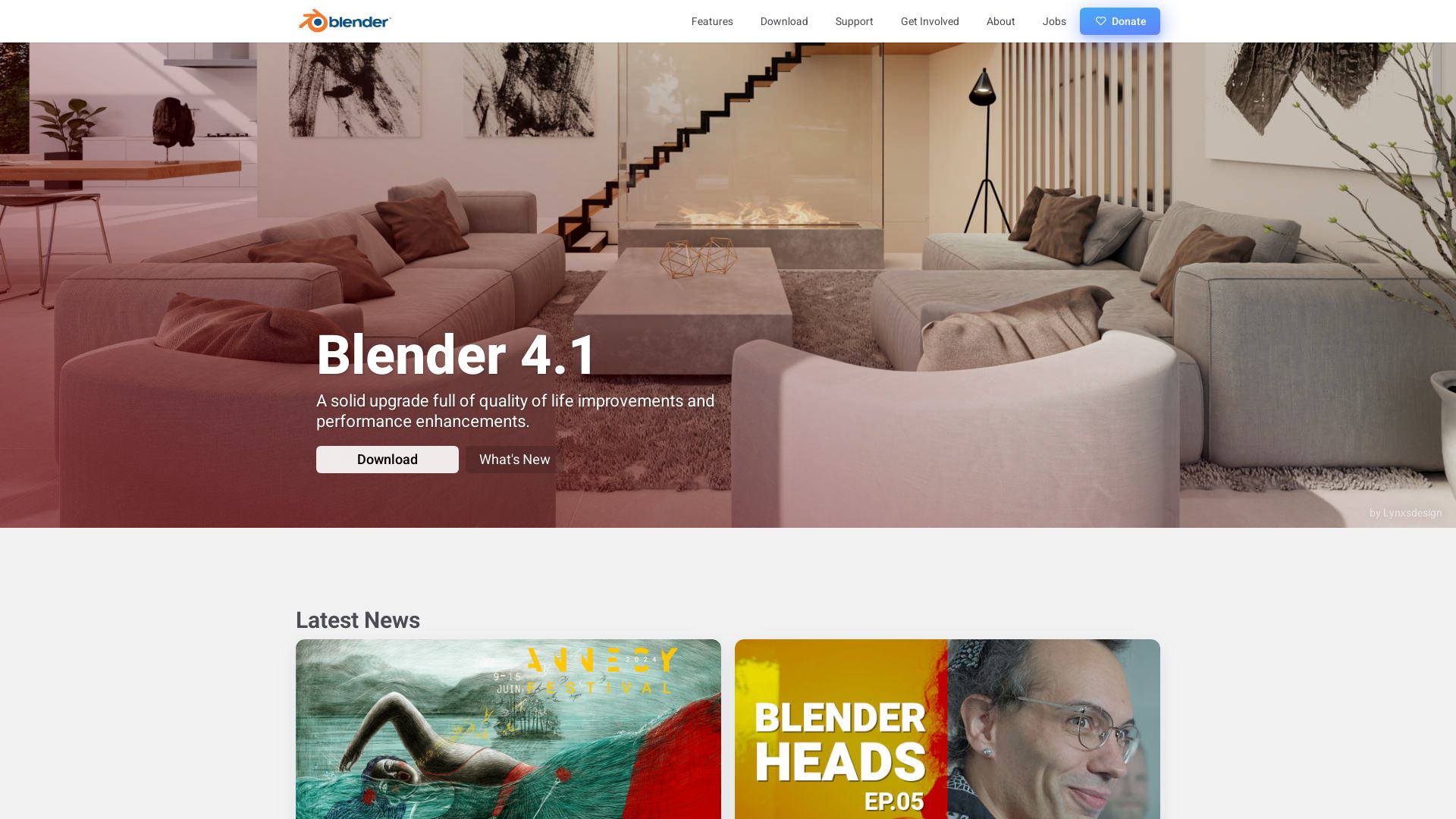
Travel with us through the warp tunnel of 3D computer graphics software and meet Blender, a star-tooled and skilled traveler! A free and open-source software that’s as versatile as a DJ in a disco – churning out animated films, sculpturing 3D-printed models, achieving the impossible in virtual reality, and making interactive 3D applications look like child’s play.
The Best of Blender
- 3D Modelling: Fancy creating your own universe? Perfect! Blender creates 3D designs as smooth as a summer cocktail.
- UV Mapping and Texturing: Blender not only helps you design 3D objects but also allows you to paint and texture them. It’s like getting a canvas, paint, and brushes all in one set.
- Raster Graphics Editing: Pose your graphics, click a draft, edit it, et voila! Your masterpiece is ready for its grand reveal!
- Animation and Motion Graphics: Tell your story, your way. With Blender, you can animate your thoughts and let your creativity dance.
| Feature | What it Does |
|---|---|
| Soft Body Simulation | For when your digital clay needs that exaggerated stretch and squish. |
| Match Moving | And you thought Camera Tracking was hard! Pshh. |
| Compositing | Allowing disparate elements to look like they’re part of the same scene – magic! |
Blender’s limitations
- The Blender Game Engine got the boot in the 2.8 release. Guess it just couldn’t keep up with Blender’s pace.
- Blender Internal was shown the exit in the 2.80 release, favoring the Eevee renderer. Talk about survival of the fittest!
Blender Pricing
Shh… can you hear that? It’s the sound of your wallet heaving a sigh of relief! This versatile, power-packed software is absolutely free. So let’s cue the fireworks!
Blender Use Cases
Scenario 1: 3D Art
Blender, in the hands of an artist, is like having unlimited paint to splash on a limitless canvas. Produce jaw-dropping 3D art that’s sure to make your portfolio pop.
Scenario 2: Animated Movies
Ever dreamed of a world where cartoon characters come to life? With Blender, you can realize this dream and much more. Your imagination is your only limit.
Scenario 3: Virtual Reality
Why limit yourself to the dull reality, when you can create your own? With Blender, the virtual world is your playground. Take your audience on a roller-coaster ride they won’t forget.
Unreal Engine
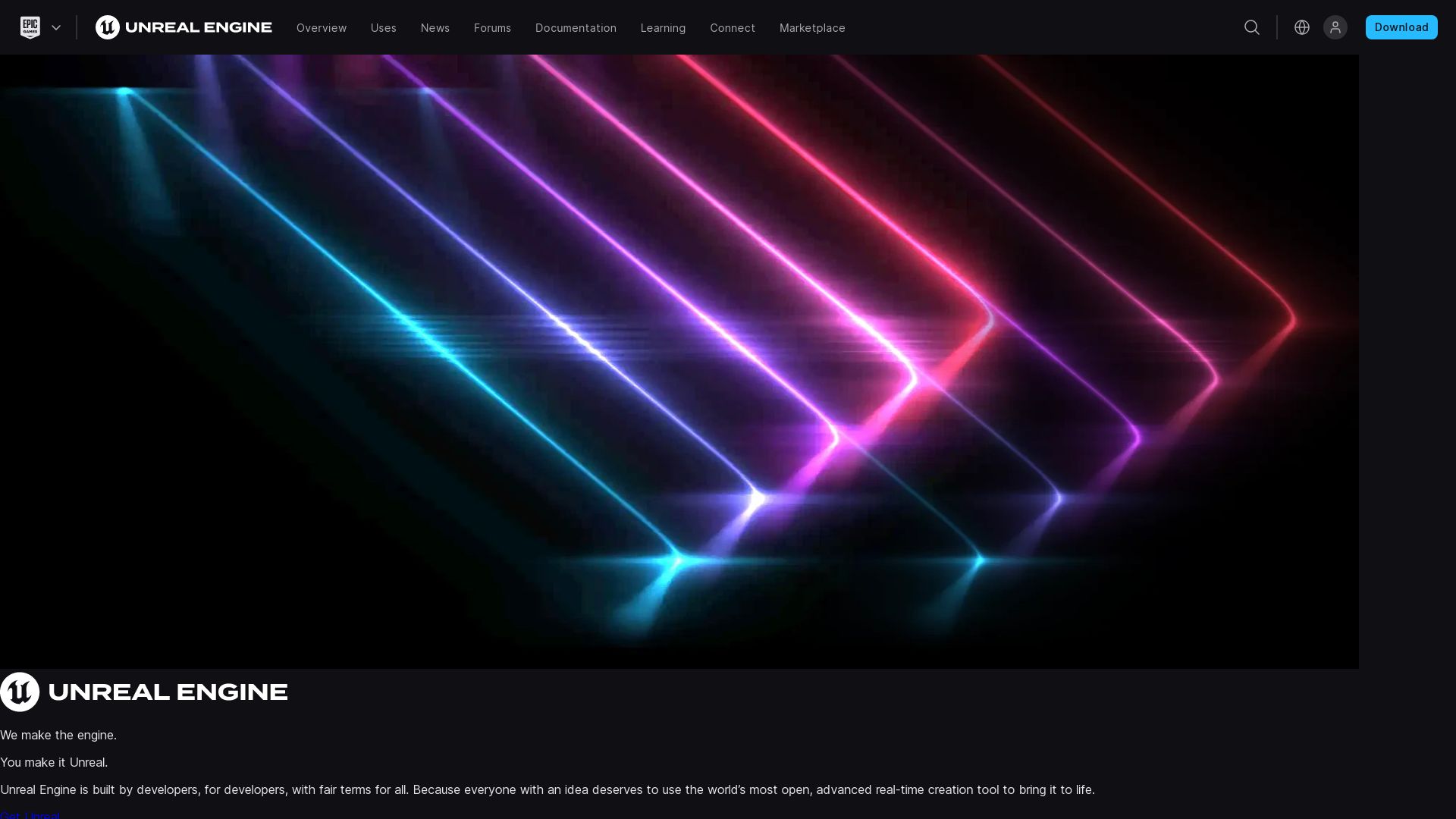
Brought to life by Epic Games, Unreal Engine (UE) is a dynamic suite of 3D computer graphics game engines, significantly shaping the landscape of games, film, and television industries. Breaking ground with the game Unreal in 1998, UE has become a robust platform, supporting a plethora of platforms from desktop and mobile to console and virtual reality.
Unreal Engine Top Features
- Scintillating graphics environment, first showcased in 1998 with the game Unreal.
- Rich, C++ based development landscape offering extensive cross-platform support.
- A powerful level editor, UnrealEd, that supports real-time constructive solid geometry operations.
- Integration of coveted features from subsidiaries such as Quixel.
- The Unreal Development Kit (UDK), aiding in the creation of iOS games and apps.
| Feature | Description |
|---|---|
| Unreal Engine 5 | Launched in April 2022, it represents the pinnacle of UE’s development prowess, setting a new benchmark for the future. |
| Unreal Engine Marketplace | An interactive platform for selling creations or purchasing work of other developers, offering an industry-highest content creator share of 88% revenue. |
| Unreal Engine for Educational Institutions | Free access to Unreal Engine for schools and universities, fostering the future generation of game developers. |
Unreal Engine Limitations
- Epic charges a 5% royalty for revenues over USD 1 million for commercial use.
- Comparatively complex programming language (C++) for beginners.
Unreal Engine Pricing
The Unreal Engine is available for free for all users, charging 5% of revenue for products that earn more than $3,000 per quarter. For games published on the Epic Games Store, the royalty model is waived completely, making it a rewarding choice.
Unreal Engine Use Cases
Use case 1 – Game Development
With state-of-the-art 3D graphics, robust C++ programming support, and cross-platform capabilities, Unreal Engine is a powerhouse for delivering visually stunning, performance-optimized gaming experiences.
Use case 2 – Film and Television
Unreal Engine plays a crucial role in creating high-definition virtual scenes and special effects for the film and television industry, its real-time rendering significantly enhancing production workflows.
Use case 3 – Educational Institutions
For schools and universities, Unreal Engine serves as an effective learning platform for game developers of tomorrow, thanks to its free educational access.
Unity

Launching unity as Unity, a potent game development engine established in 2005. Notably designed for the creation of immersive 3D and 2D games, it promises cross-platform functionality and compatibility with numerous operating systems.
Unity Top Features
- Support for cross-platform games including Android and iOS platforms
- Rich suite of tools, advanced rendering technology, and robust features for high-quality game creation
- Integration with a wide variety of coding languages such as BOO script, Javascript, and C#
- Facilitates the development of diverse applications from Augmented Reality to 3D simulations
- Provides a well-stocked asset store with pre-designed textures and features
- Maintains an active community of developers for collaborative problem-solving and system improvement
| Feature | Benefit |
|---|---|
| Cross-Platform Compatibility | Develop and launch games on multiple platforms including Android and iOS |
| Asset Store | Pre-designed textures and features aid in the design process |
| Coding Flexibility | Offers a variety of coding languages including BOO script, Javascript, and C# |
Unity Downsides
- Controversial fee model: The pricing structure imposes a fee for each game installation, causing concern among developers
- Trust issues: Unannounced changes in the service terms caused a breach of trust between Unity and its users
- Uncertainty and financial sustainability: Developers worry sudden pricing shifts could affect their financial stability
Unity Pricing
Unity’s pricing model is set to change from January 1, 2024, with developers charged a fee per game install. However, the company clarifies that fees will only apply to games surpassing $200,000 in revenue and 200,000 installations. There are free and Pro versions available, with the Plus subscription tier no longer offered. Fees also depend on the market, with higher fees for games bought in “standard” markets like the US and the UK.
Unity Use Cases
Use Case 1: Augmented Reality Applications
Unity provides an adaptable platform for creating Augmented Reality applications. Its AR/VR capabilities encourage the design of sophisticated and engaging apps.
Use Case 2: Mobile Game Development
The platform’s cross-platform compatibility makes Unity an excellent choice for mobile game developers.
Use Case 3: 3D Simulation Creation
Unity’s powerful rendering technology enables developers to create compelling 3D simulations, among other applications.
Sculptris
Digging into the domain of alternatives to Quixel Mixer, we encounter Sculptris, an offering in the ZBrush suite developed by Pixologic. It provides artists with dynamic, unencumbered sculpting and painting brushes that transform digital clay into detailed 3D models.
Sculptris Top Features
- Real-time tessellation and decimation technologies for adaptive model topology adjustment.
- Innovative Sculptris Pro mode that negates necessity for pre-set vertices, boosting artistic freedom.
- Automatic tessellation matched to brush size, yielding densities apt for fine detailing or broad surface deformations.
- “Tessimation” – a unique combination of tessellation and decimation optimizing the sculpting outcome.
- Compatibility with DynaMesh, Live Boolean models, imported models, decimated models, and others.
- Vibrant color range, offering a visually appealing interface to the artists.
| Feature | Benefit |
|---|---|
| Variable topology density | Enables fine detailing or broad surface deformations. |
| Compatibility with multiple model formats | Allows sculpting versatility and integration. |
| Vibrant color range | Enhances visual appeal and user experience. |
Sculptris Downsides
- Learning curve for beginners despite being friendly to them.
- Dependent on ZBrush for full functionality.
- “Tessimation” might necessitate significant system resources.
Sculptris Pricing
Please refer to the Pixologic’s website for the most up-to-date pricing information on Sculptris as part of the ZBrush suite.
Sculptris Use Cases
Use case 1: Gaming and Animation
Sculptris proves ideal for gaming and animation industries, where dynamic modeling and graphically rich content is requisite.
Use case 2: Commercial Advertisements
For creating detailed commercial advertisements, Sculptris provides unencumbered topology editing and diverse model compatibility.
Use case 3: Industrial Design
In the realm of industrial design, Sculptris offers the power of digital sculpting for efficient modeling and mockups.
Juicer
Leveraging the immense power of advanced juicing technology, Juicer incorporates two key types — masticating and centrifugal — to offer nutritious and fresh juice. The powerhouse of flavors and health encapsulated, Juicer sets itself apart with high juice yields, quieter operations, and ease of maintenance.
Juicer Top Features
- Masticating and Centrifugal Capabilities: Offers two types of juicing methods to ensure high yield, minimal foam production, and quiet operations.
- Nama J2 Cold Press: Marks the pinnacle of efficient juicing with high yield, accommodates larger chunks of fruits and veggies, maintains a compact form factor, and allows for easy cleaning and storage.
- Efficient Processing: Layer-based processing of produce without the need to remove skin and pulp.
- Easy Maintenance: With detachable components, cleaning becomes a breeze.
| Model | Feature |
|---|---|
| Omega H3000D Cold Press | Offers best value with nutritious juice, sturdy build, and compact design. |
| NutriBullet Juicer Pro | A fast and simple-to-use model. |
Juicer Limitations
- Centrifugal models can be noisy and bulky.
- Some models may produce a higher amount of foam.
- Investment and space can be a concern depending on the frequency of juicing, choice of produce, and preference for green juice.
Juicer Use Cases
Use Case 1: Health Enthusiast
For a health enthusiast, the Juicer’s high juice yield with low foam production coupled with its ease of use makes it a perfect addition to their daily routine.
Use Case 2: Busy Professional
A busy professional will appreciate Juicer’s fast juicing capabilities (NutriBullet) and compact build, making juicing an effortless task even during the busiest of days.
Use Case 3: Tech-savvy Individuals
The tech-savvy crowd can revel in the advanced features of Juicer, like a three-tiered design (Nama J2), which gives a tangible boost to health and flavors, offering a unique juicing experience.
Hannah Stewart
Content writer @ Aircada, tech enthusiast, metaverse explorer, and coffee addict. Weaving stories in digital realms.




